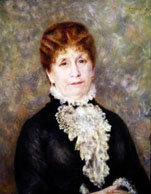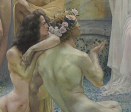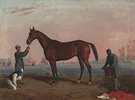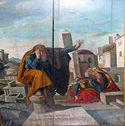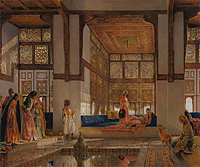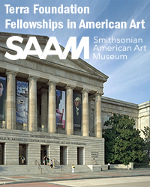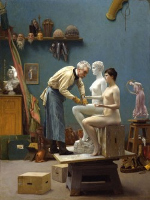X
Please wait for the PDF.
The browser will either open the file, download it, or display a dialog.
The browser will either open the file, download it, or display a dialog.
This article offers a new perspective on the transformation in Pierre-Auguste Renoir’s work in the mid-1880s, often referred to as his “crisis of Impressionism.” Through a study of Renoir’s involvement with high society Jewish patrons from 1878 to 1881, it is possible to reexamine the transition from his Impressionist phase to what has been called his “Ingresque” or “dry” manner, exemplified by the Large Bathers (1884–87). Looking closely at Renoir’s Jewish society portraits and at his contentious relationship with his Jewish patrons reveals that even after his falling out with members of Jewish high society, Renoir was influenced by their taste, advice, and demands.
This article examines some of the changes in the ways paintings were made, circulated, and consumed in late eighteenth- and early nineteenth-century Paris. It explores the creation of a new mode of speaking about the arts by a new constituency of art dealers, which flourished as a result of the emergence of a new class of bourgeois art lovers, economically enfranchised by the democratizing effects of the French Revolution.
Jean Delville’s depiction of the philosopher Plato surrounded by his students reflects the understanding of the nature of beauty Delville set out in his book The New Mission of Art. It also expresses the view of Plato as one of the world’s great spiritual teachers associated with the Theosophical movement founded by Madame Helena Blavatsky. These views in turn, have their origins in the works of Renaissance thinkers, such as Marsilio Ficino, and ultimately in the writings of the third-century philosopher Plotinus.
Between 1832 and 1870, Edward Troye created a body of paintings that depict celebrated American Thoroughbred racehorses with their African American jockeys, trainers, and grooms. This essay argues that Troye’s pictures exist in a curious state of ambivalence, caught between the old and new, they are both derivative of their elitist, early modern models and inventively provocative in their candid, often conflicted portrayals of racing’s black professional equine handlers.
In September 1860, the Cosmopolitan Art Journal noted, “Bierstadt . . . has gone into the White Mountain region to sketch, and to experiment photographically, along with his brother, a photographist of eminence.” This article examines Bierstadt’s White Mountain landscapes in conjunction with his stereographic experiments in the 1860s to explore how he used stereographic techniques to enhance both the process of looking at and experiencing his more intimate landscape paintings.
A study of L’Aciérie (The Steelworks) (1900) by Maximilien Luce in relation to the late nineteenth-century discourses of labor, fatigue, and technology suggests that the artist, an anarchist, emphasized the degree to which factory work took its toll on workers. Yet Luce underscored the stunning visual aspects of modern ironworks and professed his admiration for blast furnaces in his letters. This article proposes that the ambivalence toward technology characterizing Luce’s Charleroi canvases can be understood as echoing fin-de-siècle anarchist beliefs that machines were oppressive to workers in capitalism but essential for alleviating hard labor in a utopian anarchist society.
The Epanosifi Monastery sanctuary screen paintings (1880–82) stand today as the first known adoption of “improved byzantine art” to be accepted by the Eastern Orthodox Church in Ottoman-ruled Crete. As demonstrated in this case-study, the Cretan Church used the western Christian art sources, style, and technique proposed by the Greek state and its autocephalous church since the 1840s to express the Cretan claim for the island’s union with Greece.


